A mosaic among the ruins of conflict and war.
The biggest archaeological find in Syria, since the start of the nation's conflict 11 years ago, is a sizable, undamaged mosaic depicting the ancient Greek story of the Trojan War.
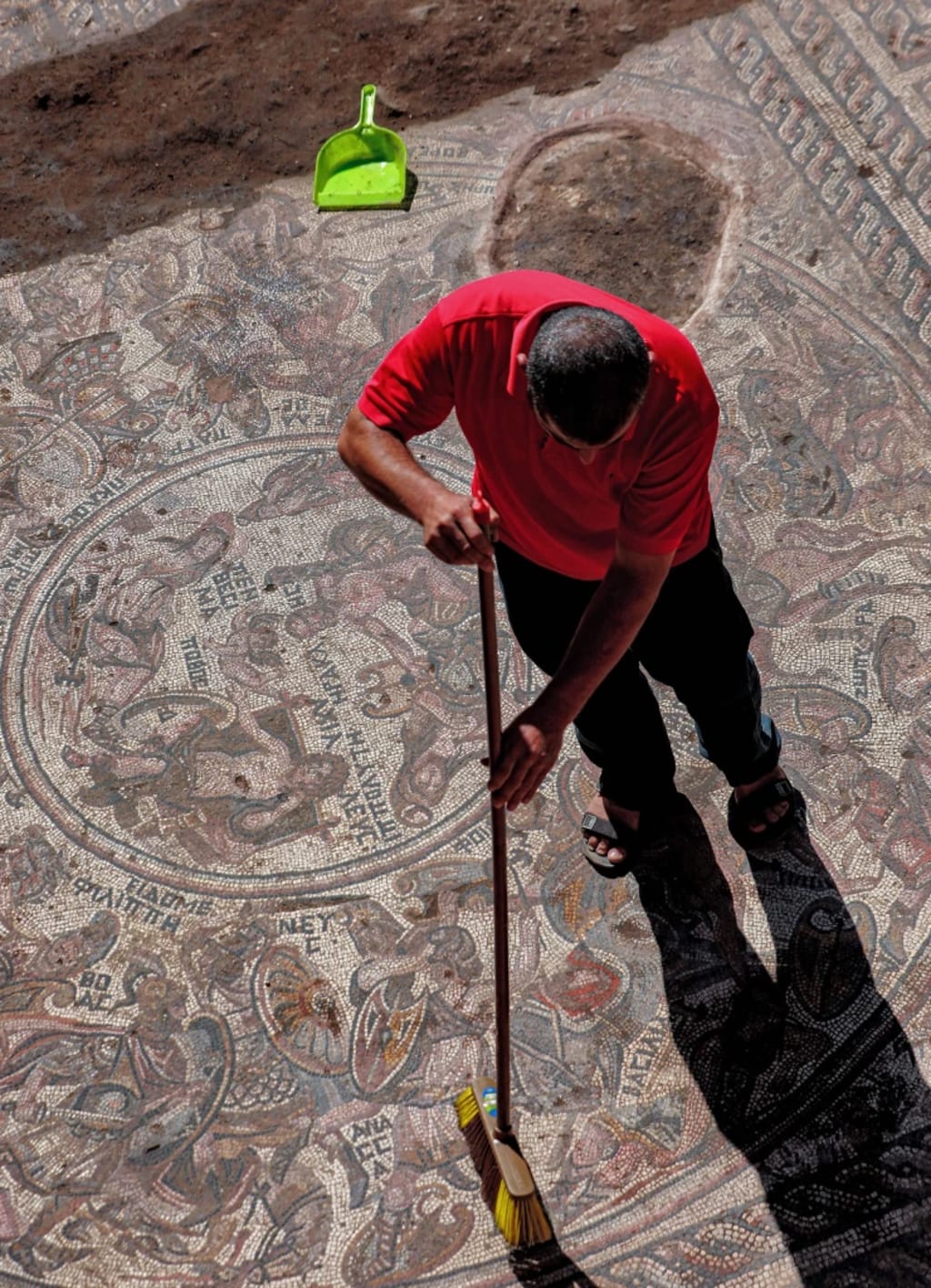
Syria has revealed the discovery of a magnificent 1,300 square-foot Roman mosaic, the nation's first significant archaeological find since the ongoing civil conflict started there in 2011. The artefacts were discovered in Rastan, a city that up until 2018 was governed by rebel organisations.
Important cultural heritage sites have been destroyed around the nation during the past 11 years, and the Islamic State completely destroyed Palmyra's antique art after the city was besieged in 2015.The Islamic State and other factions engaged in widespread antiquities looting throughout the Syrian civil war, and some of those artefacts have since been sold all over the world. Despite the attempt to sell the mosaic, it was protected by the locals and by archaeologists like Dr. Humam Saad.
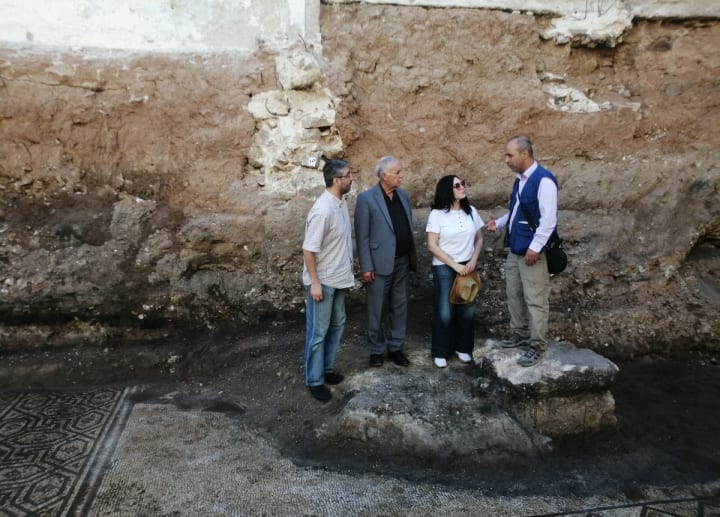
The mosaic was displayed to journalists in the central town of Rastan, which is close to Homs, Syria's third-largest city.
Mistakenly, the Associated Press, along with other news organisations that the discovery was depicting the Roman god Neptune and his 40 mistresses, and Hercules killing the queen of the Amazons, Hippolyta. It actually depicts the scenes of the story of the Trojan War, when the Amazons, came to Troy to defend the city against the Greeks. Amazons were the legendary fierce women warriors, with their leader Hyppolita killed by Hercules. Poseidon or Neptune, the same god, with different names, the first one Greek name and the other one Roman. Is not depicted at all in the mosaic, we can only see some of Neptune's like Galatia. Nevertheless, the description of the mosaic and its characters Neptune and his 40 mistresses, is far way from the truth, and it is best for these journalists to avoid misinformation by doing better research and checking their sources.
Nevertheless, I will emphasize the details regarding the mosaic and not on journalistic incompetence. So, the mosaic can be divided into two parts, or be raised better in two circles.
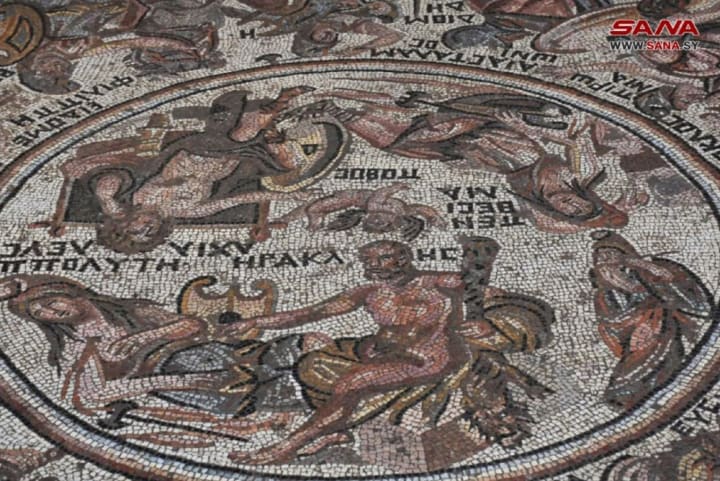
As shown in the picture, the inner circle, at the centre of the mosaic we can see two scenes. The first one is Hercules killing Hippolyta, the Amazon warriorness. While the second one shows Achilles killing Penthecilia. Another Amazon warriorness. but here, we have one more detail. In between the names of Achilles and Penthecilia, we can see a Greek word "pothos", which can be translated as passion, accompanied by a Cupid, the Roman symbol of love, used even today. This word, even though that it has a complicated meaning, is especially used by Plato, in many of his dialogues. The Mosaic is just describing the love story between Achilles and Penthecylia. In the myth, it says that Achilles, after killing Penthecilia, and after Petentialia's helmet fell into the ground, revealing her face, he instantly fell in love with her, feeling devastated that he killed her. This part of the myth has an interesting story of how in battle, two warriors fell in love, especially after only one of them was already killed.
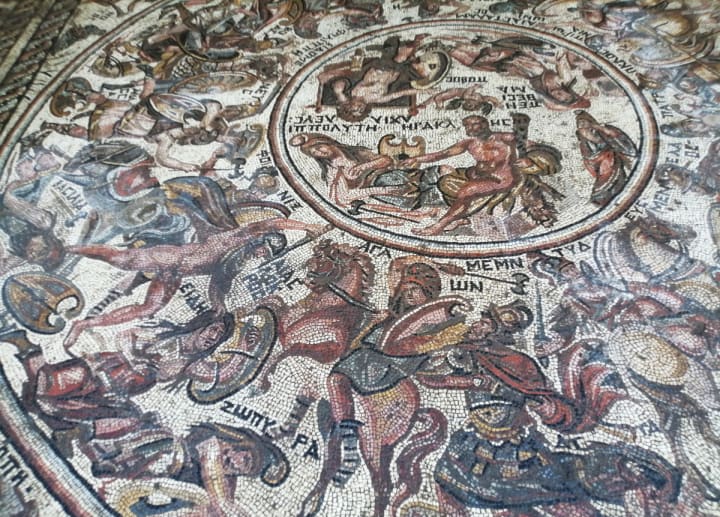
In the outer circle of the mosaic, we can see the rest of the fight with some second and first-tier characters. Like Menelaus, the husband of Helen, who has been kidnapped by the Trojan Prince Paris.
What's next?
Even though many old artwork did not survive the Syrian civil war, yet this amazing mosaic did. Sulaf Fawakherji, a well-known Syrian actress and board member of the Nabu Museum, expressed her desire to purchase other structures in Rastan, which she claims is teeming with undiscovered cultural heritage sites and relics.
Fawkherji told the AP, "There are additional structures, and it's obvious that the mosaic stretches much beyond. "Rastan is a historically significant city and has the potential to be a major heritage travel destination."
Syria offers a wealth of archaeological riches because it has served as a "melting pot" for numerous civilizations throughout the centuries, including the Canaanites, the Umayyads, the Greeks, the Romans, and the Byzantines.
Unfortunately, the conflict that started in 2011 led to the destruction of many of these artefacts. In the city of Homs, the Khalid Ibn al-Walid Mosque was destroyed, the Umm al-Zinar Church was set on fire, and Rastan's mosaics were taken.
Written by Sergios Saropoulos
About the Creator
Sergios Saropoulos
Philosopher, Journalist, Writer.
Found myself in the words of C.P. Cavafy
"And if you find her poor, Ithaka won’t have fooled you.
Wise as you will have become, so full of experience, you’ll have understood by then what these Ithakas mean"
Enjoyed the story? Support the Creator.
Subscribe for free to receive all their stories in your feed. You could also pledge your support or give them a one-off tip, letting them know you appreciate their work.




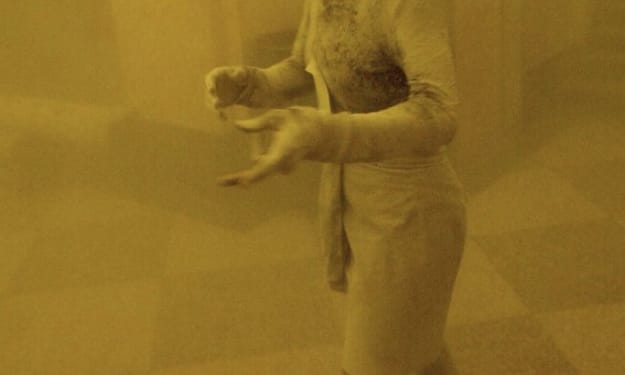

Comments
There are no comments for this story
Be the first to respond and start the conversation.